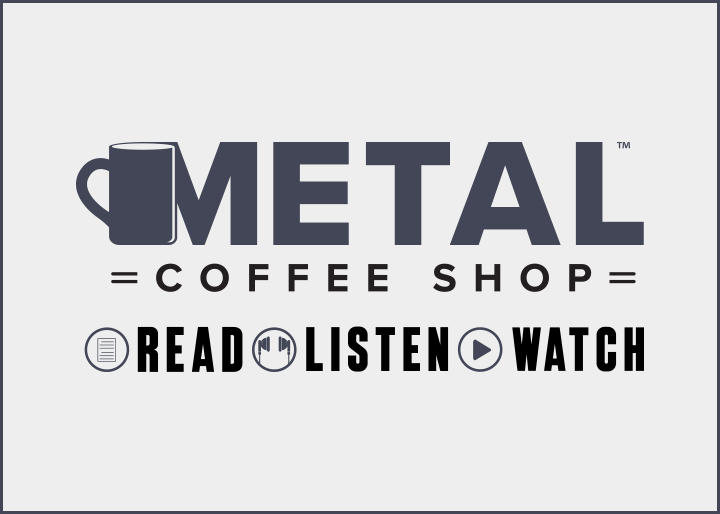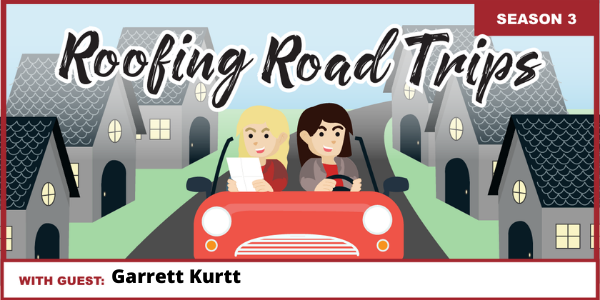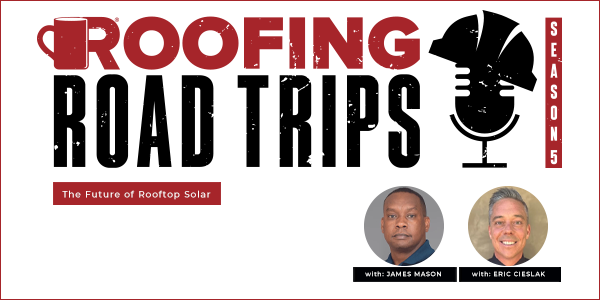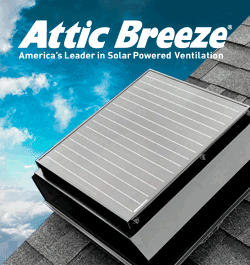Kenneth Klein - Condensation Potential Within Wood-Framed Parapets - PODCAST TRANSCRIPTION
August 9, 2023 at 3:03 p.m.Editor's note: The following is the transcript of a live interview with Kenneth Klein from the Western States Roofing Contractors Association. You can read the interview below or listen to the podcast.
Intro/Outro: Welcome to Roofing Road Trips with Heidi. Explore the roofing industry through the eyes of a long-term professional within the trade. Listen for insights, interviews, and exciting news in the roofing industry today.
Megan Ellsworth: Hello, everyone. My name is Megan Ellsworth here at rooferscoffeeshop.com, and I am here on a roofing road trip to see Ken Klein from the Western States Roofing Contractors Association. Hi, Ken. How are you doing?
Kenneth Klein: Good. How are you?
Megan Ellsworth: Doing well. I'm really excited to chat with you. Let's dive right in and have you just introduce yourself and what you do at Western States.
Kenneth Klein: Yeah, sure. I've been with Western States for only four years now, but with Western States I'm also at Simpson Gumpertz & Heger. I'm a senior principal at Simpson Gumpertz & Heger. I've been there for 38 years. It's the only job I've ever had. Roofing, waterproofing, building envelopes, that's what I specialize in. Western states brought me in. I've had a great time working with them, developing technical bulletins, and providing them with technical input when they have questions.
Megan Ellsworth: That's great. Awesome. Wow, you said 38 years. Look at you. That's a long time. Amazing. So can you tell us a little bit how you work with the Western States Technical Committee to prioritize technical topics?
Kenneth Klein: Yeah, it is an interesting process of my interest in various topics and then the committees. There's four different committees. Industry, low-slope, steep-slope, and waterproofing, and we get together twice a year, and we review various concepts and ideas and problems that people are seeing in the industry and we determine which ones we want to write technical bulletins for. So I write up eight technical bulletins a year, and it's as much my choice and their choice. We work collaboratively, and what I put together is their content. It's a fun process of developing and researching various technical issues.
Megan Ellsworth: That's great. What a great resource you're providing as well for the industry.
Kenneth Klein: Yeah, it's something my company, Simpson Gumpertz & Heger, was developed by three MIT professors 65 years ago, and giving back to the industry is a really important component of what every partner is supposed to do. So I've really enjoyed it. It's my way of giving back to the industry, and at the same time, it's fun to educate people. It's fun to keep projects out of litigation if you can.
Megan Ellsworth: Yeah.
Kenneth Klein: It's a great way of working with and learning, and I've had a great time because I've learned as much as they do. I've gotten a lot out of this group.
Megan Ellsworth: That's fantastic. I love the back and forth, the give and take. So your recent paper on condensation potential within wood-framed parapets is very important. Can you tell us a little bit about it?
Kenneth Klein: Yeah, this is something that happens in the roofing industry of roofers being accused of having a failed roof membrane when it is as much a problem of poor design. They don't have any responsibility for stopping moisture from getting into the parapets. That's part of the original design. So sometimes parapets degrade because moisture from the building gets trapped in the parapet and then condenses and leads to deterioration, and the first phone call is always to the roofer. So it was just pointing out an issue that happens in the industry and saying, "Even though it's not the roofer's responsibility, they should at least be aware of the issue of how the parapets are designed so that they can ultimately bring it to someone's attention, even though it's not their responsibility, but just letting people know that this might be a problem in the long run." So it was trying to provide help in designing these systems at the same time stressing that it's not the roofer's responsibility.
Megan Ellsworth: For someone that hasn't read the paper. What can condensation do to wooden frames?
Kenneth Klein: Yeah. Condensation is, first you have to think about a volume of air, an air volume. Air can hold so much moisture, and when the air is warm, it holds more moisture. And when it's cold, it holds less moisture. So I'm showing you a sponge right now, and as it gets cold, you might squeeze out water. So this volume of air that gets in the cavity of a parapet all of a sudden gets cold because there's no way to keep it warm at night. For instance, it's warm in the day, lots of holds, lots of moisture, but at night that air volume actually gets squeezed by the cool air that's around the parapet, and it squeezes out some moisture, and that moisture gets absorbed by the wood. Once you get moisture content over 19% in the wood, that starts leading to problems, especially over 25% moisture content in the wood and the framing. Then you start getting mold and deterioration, leading to the breakdown of the structure.
Megan Ellsworth: Oh, God, oh, man, that is just the worst. That's the last thing you want. To be blamed for that mold infestation, that would just suck. So I hope all you roofing contractors out there are listening carefully. What are some ways to prevent this condensation that you found through your research?
Kenneth Klein: The bottom line is, you don't want air from the building or the structure to get up into the parapet. So it's either sealing it off, and sealing it off is the best way, and using a spray foam of two inches of closed-cell spray foam at the roof line to make that cavity basically sealed off. But then also venting that category in some way. Venting, the easiest way is to use a vapor-permeable roof... Not roof, but wall underlayments or wall weather barriers that lets a little bit of moisture out that might collect still in the parapet. Sometimes you could also put vents in, however, and that would also help, but it's really sealing off at the roof line, and the best way to seal off is spray foam. Close-cell spray foam is probably the best way.
Megan Ellsworth: Okay. That's great to know. What is some good advice you can give to contractors on this subject? Maybe spray foam manufacturers they should reach out to?
Kenneth Klein: They should really... When they are bidding on a project, they look at the roof drawings, they look at the details. It's a very quick review just to say, "Have they accommodated a method to close off the parapet, stopping moisture from getting into the parapet?" It's just a quick review. They can easily let the general contractor know and say, "We've got a concern here. It's not our responsibility, but we've got a concern." It's just trying to solve a problem that might be occurring down the road so they don't get brought into a lawsuit that they have no responsibility for. They're not doing anything to... They have nothing to do with the building of the parapet, but they'll be brought in just because it will look like a roof-related problem ultimately. So they're just protecting themselves down the road. They can do that review very quickly, just when they look at the detail for the first time and understand, "Is it sealed off at the roof line or not?"
Megan Ellsworth: Is there a way for a roofing contractor to get ahead of any potential litigation?
Kenneth Klein: It sure would help if they just brought it to the general contractor's attention. A quick email. Email's as good as a letter now in this litigious world that we live in.
Megan Ellsworth: Yeah.
Kenneth Klein: We'll tell them that they tried. They didn't build it. They have no responsibility, but it will really work in the world of litigation that they brought it to someone's attention. If it was disregarded, once again, since they didn't have to build it, they're not really going to be brought in. It's going to be showing that they were trying to do their due diligence, at least trying to help the project. That really helps.
Megan Ellsworth: So if a contractor is really engaged with this podcast right now, I hope you are, contractor, listening out there, where can they find some of your other papers?
Kenneth Klein: They're all in the Western States' Technical Resources section. If you're a member of Western States, you have access to all the technical resources that have been done for the last 20 years. It includes things like... My predecessor did some amazing work on details. The details to this day are just fantastic. The details are for low-slope, steep-slope, and below-grade waterproofing. There's just some amazing work that was done. There's excellent... Other bulletins that were done by my predecessor, we're working on some right now that are all very interesting from waterproofing. Waterproofing expansion joints on podium decks just got done. We've done work with high-density polyiso cover boards, both lab work and analytical work, to show that they're a very viable alternate to conventional cover boards. So it's been a fun process of just trying to develop these things.
Megan Ellsworth: Yeah. When is your next paper going to be released?
Kenneth Klein: Actually, I think the podium deck expansion joint one comes out this month.
Megan Ellsworth: Fabulous.
Kenneth Klein: There's a summary of ASTM as a firm. Once again, my firm sends a lot of people to ASTM, and we summarize what's going on at ASTM. Those are standards that are developed, which are good to see, but the whole process is there. So we have a paper describing that development and where the standards are. So that goes out each year also, so the industry members can really be kept informed.
Megan Ellsworth: That's great. Thank you so much for your time with me today. Do you have any last words for contractors out there working with the wood-framed parapets?
Kenneth Klein: I guess there is something because we're seeing the sensitivity of various materials, engineered lumber versus conventional rough-sawn lumber. There's some issues that we've seen. So we do talk about this in other technical bulletins. So the use of engineered lumber is something to be aware of and understand how to work with it. But Western States provides a lot of input, and it's a great group of people, and it's been fun working with them.
Megan Ellsworth: That's great. Thank you again for your time. To all you contractors out there listening, you can find all of this information and more on the Western States Roofing Contractors Association directory on rooferscoffeeshop.com and askaroofer.com. So go check it out, read this paper, and get informed and ready to go for the next job. Ken, thank you so much. I hope you have a great week, and we'll be hearing and listening to you next time on Roofing Road Trips from rooferscoffeeshop.com.
Kenneth Klein: Thanks so much.
Intro/Outro: Make sure to subscribe to our channel and leave a review. Thanks for listening. This has been Roofing Road Trips with Heidi from the rooferscoffeeshop.com.






















Comments
Leave a Reply
Have an account? Login to leave a comment!
Sign In